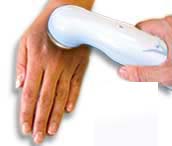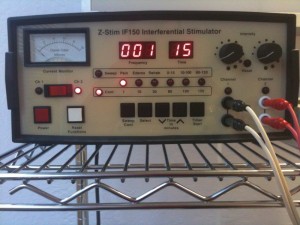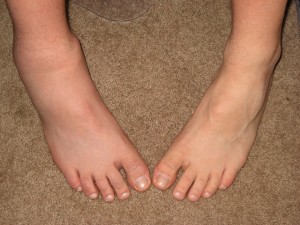 When people hear the word “ultrasound” the first thing that comes to mind is the ultrasound from the OB-GYN where you can view a 2-dimensional or 3-dimensional image of what’s inside your tummy. But, this therapy is not this type of ultrasound as it is a therapeutic procedure that uses sound waves in treating injuries such as with soft tissues, muscles or joints.
When people hear the word “ultrasound” the first thing that comes to mind is the ultrasound from the OB-GYN where you can view a 2-dimensional or 3-dimensional image of what’s inside your tummy. But, this therapy is not this type of ultrasound as it is a therapeutic procedure that uses sound waves in treating injuries such as with soft tissues, muscles or joints.
The sound waves would vibrate at a frequency that is higher than the range that human ears could hear and it provides a mechanical vibration that provides a micro-massage. I can either be a thermal or non thermal application at frequencies ranging from 0.72 MHz to 3 MHz.
Ultrasound therapy had been used as a treatment for years for musculoskeletal injuries as it helps in rapidly healing the injured tissue as well as decreasing the pain. However, it is underutilized despite its great potential and this is because of a few factors including the lack of education for therapists to use this treatment. The technique in using this treatment is very specific and some therapists are reluctant as they have been disappointed with previous outcomes which may have been a result of their insufficient training regarding ultrasound therapy.
Therapists must understand how this treatment works in order to get the desired outcome. The potential for success is increased as you combine the knowledge, correct technique and pathology of injury. Things that should be considered by the therapists to ensure a maximum effect for patients are the factors that would affect the absorption of the muscles, hemoglobin and fat, the physiology as well as the delivery process and contraindications for this treatment.
The basic benefits of the ultrasound therapy includes an increased in the elasticity of the collagen found in joint capsules, tendons and scar tissues; an increase in the motor as well as the sensory nerve conduction that helps in reducing the pain; the increase in blood flow; the reduction of muscle spasm from an altered contractile activity of the skeletal muscle; and the muscle spasm reduction through the reduction of the activity of the muscle spindle.
US therapy is just one of the treatments that must be considered in treating musculoskeletal injuries. Other treatments to be considered are electromagnetic radiation, hot packs, electrical stimulation, massage, cryotherapy, heat therapy, Erchonia Cold Laser PL 5000 and exercise. The choice really depends on the therapist and with the type of injury and the location of the injury as well as the condition of the patient.
There certain contraindications. If the patient has these medical conditions then this treatment must be avoided. Medical conditions include malignancy, pregnancy, myositis ossificans, circulatory insufficiency, acute infection, sepsis (severe) infection. Also, if the injury is situated over the heart, spine, eyes, testes, growing bones, carotid sinuses, epiphyseal plates, cervical stellate ganglion, pacemaker or vagus nerve then ultrasound therapy must also be avoided.
Precautions must also be observed for hypersensitivity to the treatment, area of the tendon repair, cemented prosthesis, or of reduced in circulation and with the diminished sense of pain and change in temperature or the lack of it. This type of therapy is available in our office for rehabilitation of our injured patients.
Question: Have you ever experienced ultrasound therapy while rehabilitating your injury?

